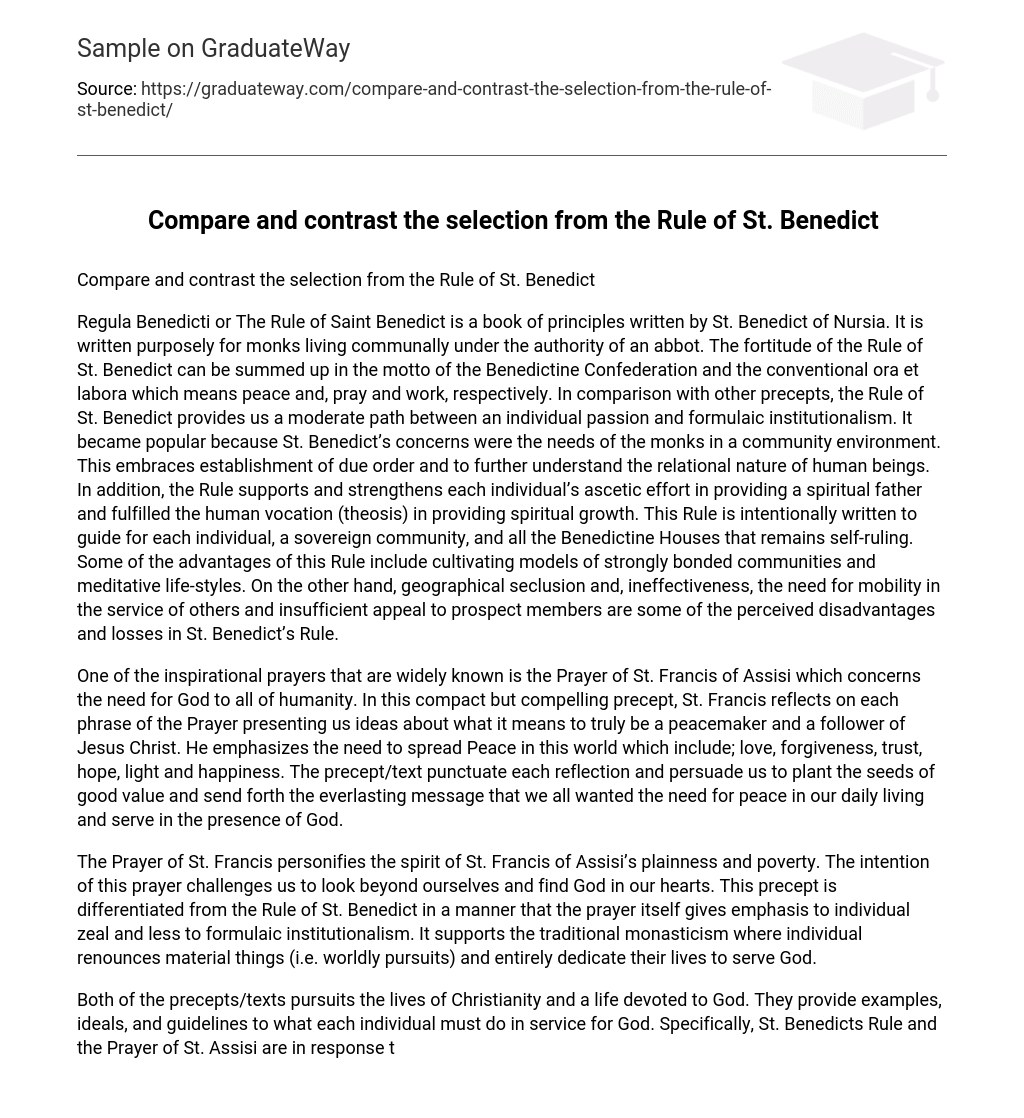Regula Benedicti, also known as The Rule of Saint Benedict, is a book of principles written by St. Benedict of Nursia specifically for monks living in a communal setting under the authority of an abbot. The fortitude of this rule can be summed up in the motto of the Benedictine Confederation: ora et labora, which means pray and work” respectively, promoting peace and productivity.
In comparison with other precepts, The Rule of St. Benedict provides a moderate path between individual passion and formulaic institutionalism. It became popular because St. Benedict’s concerns were focused on meeting the needs of monks living in a community environment by establishing due order and further understanding the relational nature of human beings.
The Rule supports and strengthens each individual’s ascetic effort by providing spiritual guidance through a spiritual father figure to fulfill their human vocation (theosis) through spiritual growth. This rule was intentionally written to guide individuals within sovereign communities or self-ruling Benedictine Houses.
Some advantages to following this rule include cultivating models for strongly bonded communities and meditative lifestyles; however, some perceived disadvantages may include geographical seclusion or ineffectiveness, mobility limitations when serving others, and insufficient appeal to prospective members.
One of the most inspirational prayers widely known is the Prayer of St. Francis of Assisi, which concerns the need for God in all of humanity. In this compact but compelling precept, St. Francis reflects on each phrase of the prayer, presenting ideas about what it means to truly be a peacemaker and follower of Jesus Christ.
He emphasizes the need to spread peace in this world, which includes love, forgiveness, trust, hope, light and happiness. The precept/text punctuates each reflection and persuades us to plant seeds of good values and send forth an everlasting message that we all need peace in our daily living while serving in the presence of God.
The Prayer of St. Francis embodies the simplicity and humility of St. Francis of Assisi. Its purpose is to encourage us to seek God within ourselves, rather than focusing solely on our own desires. This principle differs from the Rule of St. Benedict in that the prayer emphasizes personal devotion over institutionalized practices. It aligns with traditional monasticism, where individuals renounce material possessions and dedicate their lives entirely to serving God.
Both of these texts pursue the lives of Christianity and a life devoted to God. They provide examples, ideals, and guidelines for what each individual must do in service to God. Specifically, St. Benedict’s Rule and the Prayer of St. Francis are responses to Jesus of Nazareth’s call to follow Him.
In Christian tradition, monasticism embraces vocation from God and desires to attain eternal life in His presence.
Works Cited.
Oxtoby, W. G. (2nd edition). World Religions: Western Traditions.





